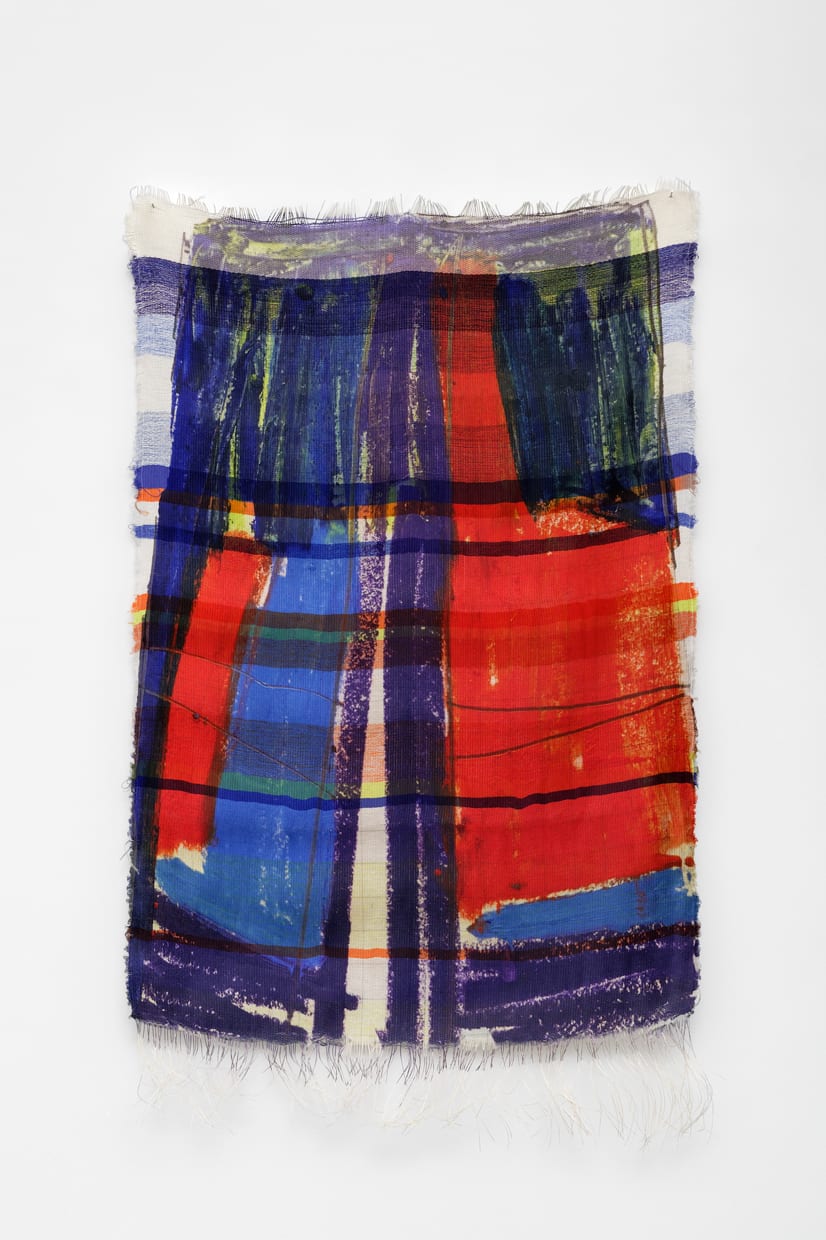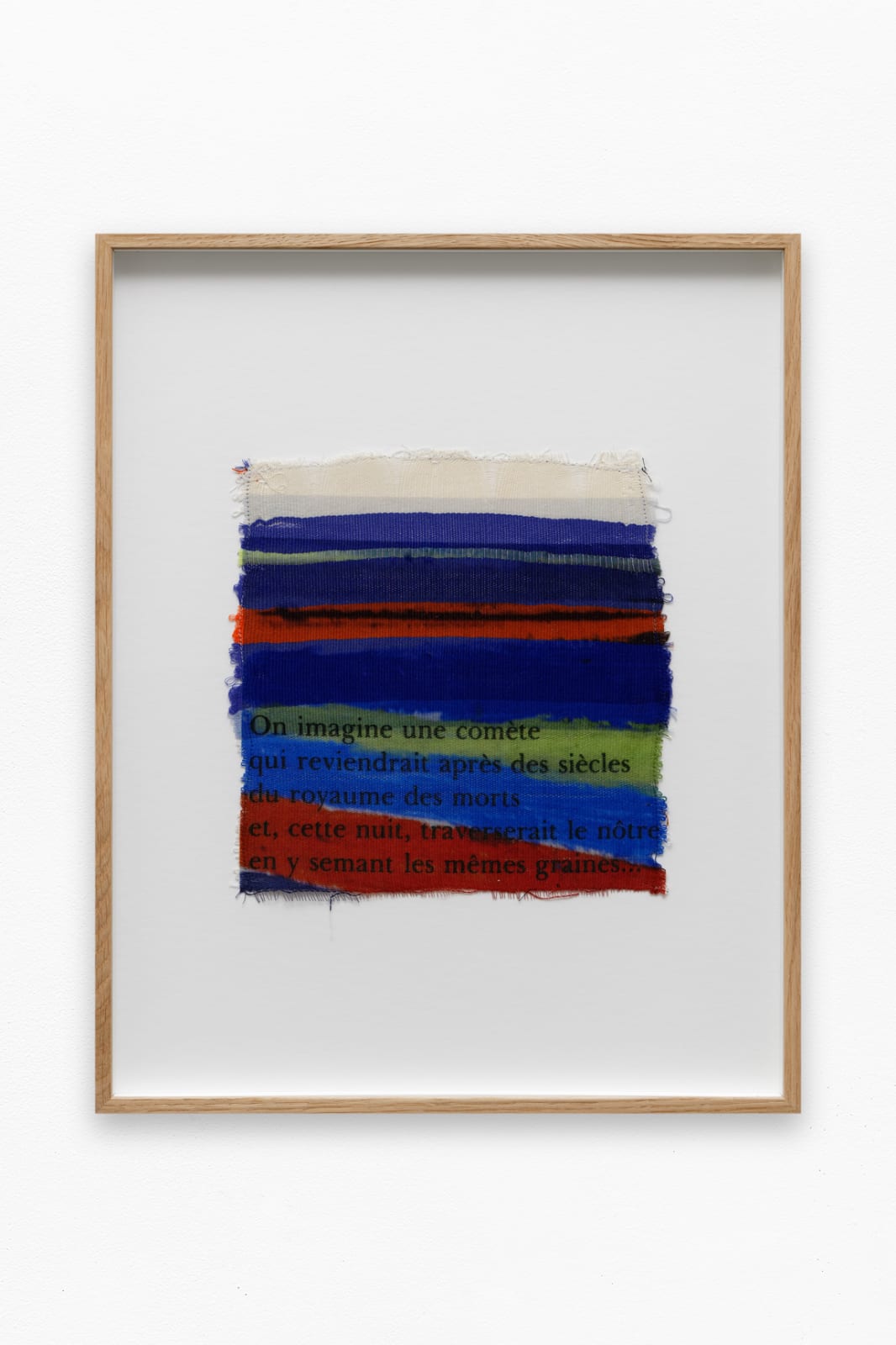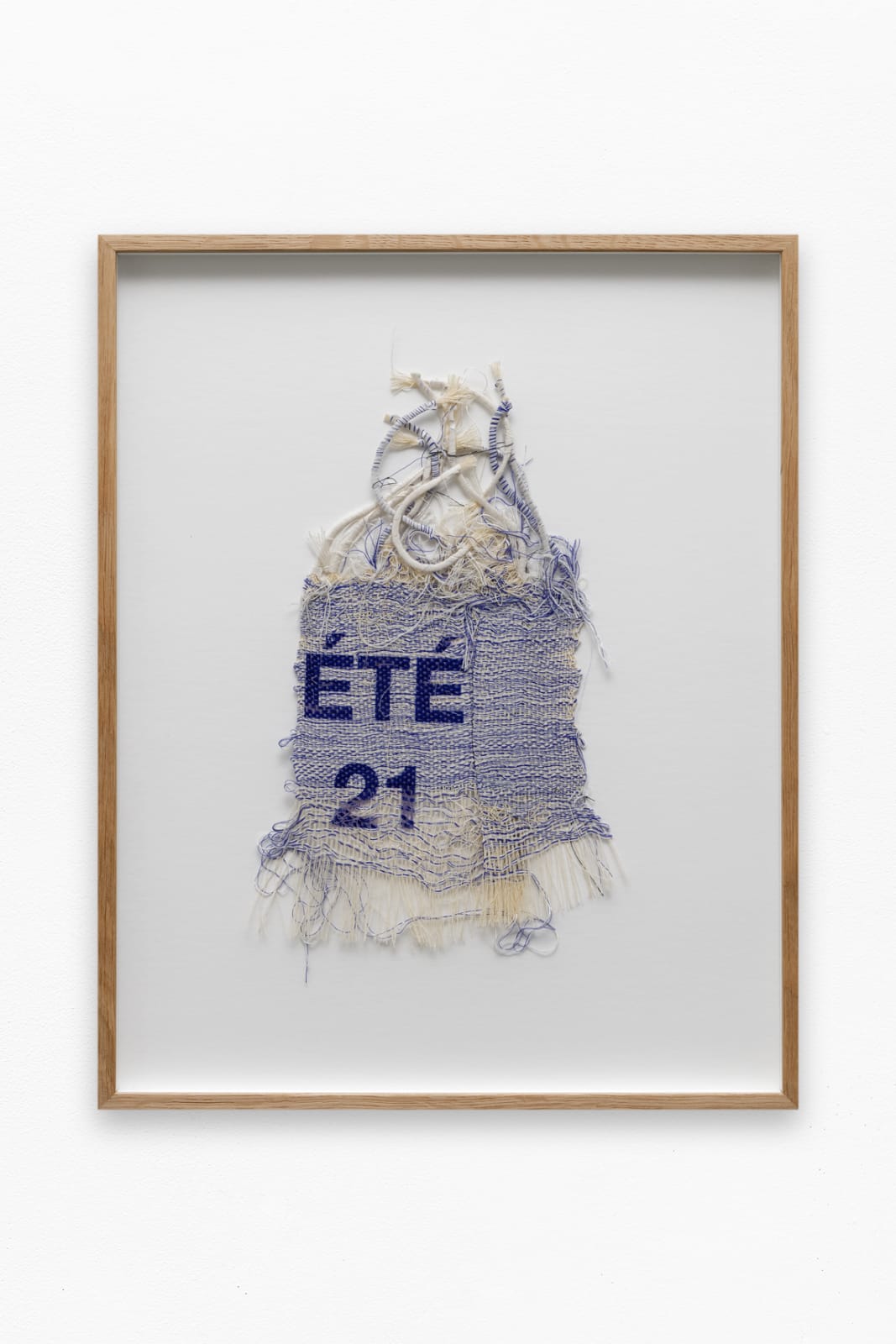Marie Hazard: Rendez-vous
Since time immemorial, weaving has been a place of exchange-in the image of interwoven threads-using the same tools, practices and gestures, opening the door to new forms of socialization. As the pandemic begins to dissipate, Marie Hazard invites us to the Galerie Mitterrand. It is an invitation to the meeting, that of the people, the threads, the colors, the forms, the matters.
In this perspective, the artist wanted the invitation card to be both a summons and a way for everyone to express themselves on the notion of meeting and sharing. The visitor is indeed invited to complete the card by freely answering the question: "What does the appointment represent for you?", then to deposit it in an urn placed at the entrance of the gallery. In order to invite the public to discover her working method, Marie Hazard has installed her loom in the gallery, which also allows her to make white monochrome weavings (like the blank pages of a book) on which the content of the invitations will be printed at the end of the exhibition.
The weaving is both simple and complicated, requiring intense manual labor, whereas a similar result could be obtained with a machine. There is in the idea of the loom an irrational, anti-capitalist attitude, or at least the opposite of the notion of productivity. From this point of view, hand weaving acts as a statement of failure of technical progress. Hand weaving is a simple act that transforms our imagination by inscribing our gestures in space and time. But it also expresses the innovative breath of the artist who diverts it by printing words and fragments of sentences on the woven fabric.
If the art of weaving dates back to the 3rd millennium BC, the tools, mainly made of wood, have evolved over the centuries. The method, at first artisanal and used mainly by women, later became industrial and mechanical. Marie's approach reminds us that as early as the 19th century, the Arts and Crafts movement in England advocated the development of craft techniques adapted to our natural abilities. The materials used by Marie are simple: woven paper, polyester, linen. Her work begins with preparatory drawings in pastel or colored pencil. A part of the unknown presides over this process, leaving room for surprises, accidents, in short, for chance.
Marie's weavings are an extension of matter into space and at the same time a transformation of space into something dynamic and alive: crushed, mixed, scattered, shimmering colors, threads that blend, neutralize, clash, resulting in weavings that are in turn tactile, fluid, imbued with materiality, reflecting the trace of tools, light, dense, spontaneous, geometric, or on the contrary chaotic and sensual. A video accompanies the exhibition; it shows the artist at work, tracing the different stages of the creation of a weaving, from the preparatory drawing to the weaving and printing.
The works exhibited at the Galerie Mitterrand result from the reading of Roland Barthes' Fragments d'un discours amoureux. Working intuitively with the words, "deciphering" the fragments, Marie tries to "weave feelings." The artist prints paintings, words and fragments of poems on her weavings. The letters introduce a flutter between the semantic reality of the words and the essentially abstract visual material of the weave. Most of the works in the exhibition are of a format close to that of an art book that we would enjoy looking at. But it remains an open book; since the work is in the process of becoming, the degree of accomplishment or finitude left in suspense.
The fragment is the main thread of this exhibition. As Marie says: "What I like is that there is no duration, that is to say that you can experience a fragment for a certain period of time. You don't know when that period will end, before moving on to the next one. Each fragment is for me a particular period."
Olivier Berggruen, 2021





